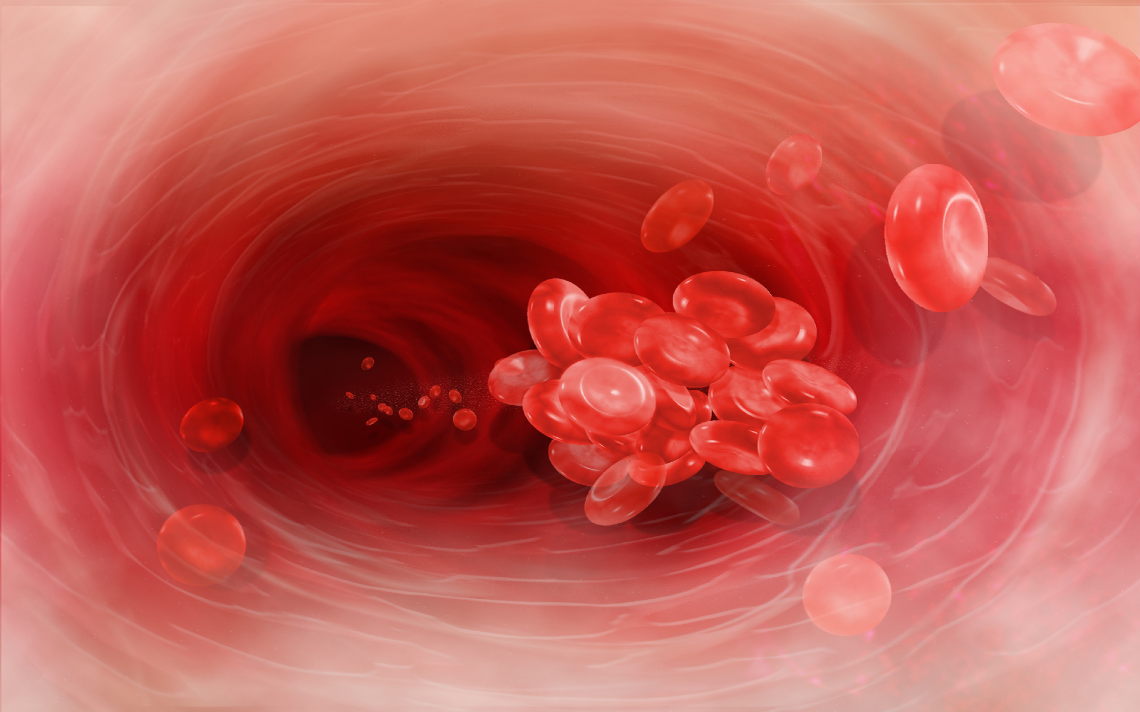The media often use terms like holy grail, silver bullet, or dawn of a new age in… for new treatments that seemingly offer a cure to a given ailment without any concomitant adverse effects. This trend is particularly noticeable in oncology, with Time magazine’s front cover from May 2001 perhaps being the most famous example. However, oncology is not the only therapy area where this is apparent.
In recent years, these terms have been used to describe factor XI (FXI) inhibition1,2 in the anticoagulation literature, on the basis that this therapeutic target may putatively lead us to the promised land of preventing pathological thrombosis without generating bleeding risks.
But let’s backtrack a little. In the last decade or so, non-vitamin K antagonist oral anticoagulants (NOACs) revolutionized anticoagulation therapy, addressing convenience- and/or safety-related unmet needs associated with heparin, low-molecular-weight heparin, and vitamin K antagonists. However, NOACs work at the junction of the extrinsic and intrinsic coagulation pathways, which means that prevention of pathological thrombosis comes at the cost of impairing physiological hemostasis.
The traditional view of the coagulation cascade suggests that the extrinsic and intrinsic pathways are inextricably linked. But what if they could be uncoupled? Evidence from human and animal studies suggests that FXI is critical for thrombus formation, but not essential for normal hemostasis.3 Additionally, FXI deficiency in humans has been associated with lower risk for cardiovascular and venous thromboembolism events.4 These findings have made FXI and, to a lesser extent, factor XII,5 targets for the development of new anticoagulants.6,7 This interest is reflected by the numerous investigational compounds in the current anticoagulation clinical development pipeline.8
FXI inhibitors are further ahead in development than those targeting FXII. Five of these are already in Phase II: abelacimab (a once-monthly subcutaneous or intravenous fully human monoclonal antibody targeting both FXI and XIa; Anthos Therapeutics), asundexian (a daily oral small molecule targeting FXIa; Bayer), Factor XI LICA (subcutaneous antisense oligonucleotide targeting FXI synthesis reduction; Bayer), osocimab (a once-monthly subcutaneous or intravenous fully human monoclonal antibody targeting FXIa; Bayer), and milvexian (an oral daily small molecule targeting FXIa; BMS/Janssen).
It may be early days but the data emerging from Phase II trials are encouraging, showing FXI inhibitors as being non-inferior or superior to enoxaparin in preventing venous thromboembolism in patients undergoing knee arthroplasty, without increasing the risk of bleeding.9, 10, 11, 12
If these findings are replicated in Phase III within this and other settings where thrombosis is prevalent, FXI inhibitors could bring about a major paradigm shift in how thrombosis is managed.
At AS&K, we’ve been at the cutting edge of developments in the field of thrombosis for 25 years. This has given us the opportunity to witness the excitement engendered by the arrival of new therapies, the challenge of learning the associated science, and the privilege of working with many of the leading experts driving this field forwards. Thrombosis remains a major cause of mortality and morbidity, but FXI inhibition appears to promise better outcomes for patients at risk for thrombosis. We’re keeping our hopes up for positive Phase III data!
References
- Flaumenhaft R. Making (anti)sense of Factor XI in thrombosis. N Engl J Med 2015;372:277–278.
- Factor XI inhibition: The holy grail of haemostasis-sparing anticoagulation. Presentations at the International Society on Thrombosis and Haemostasis (ISTH) Virtual Congress 2021. Available from: https://www.emjreviews.com/hematology/symposium/factor-xi-inhibition-the-holy-grail-of-haemostasis-sparing-anticoagulation-j190421/. Accessed December 2021.
- Puy C, et al. The hemostatic role of factor XI. Thromb Res 2016;141(Suppl. 2):S8–S11.
- Preis M, et al. Factor XI deficiency is associated with lower risk for cardiovascular and venous thromboembolism events. Blood 2017;129:1210–1215.
- Stavrou E and Schmaier AH. Factor XII: what does it contribute to our understanding of the physiology and pathophysiology of hemostasis & thrombosis. Thromb Res 2010;125:210–215.
- Weitz JI. Factor XI and factor XII as targets for new anticoagulants. Thromb Res 2016;141(Suppl. 2):S40–S45.
- Weitz JI and Fredenburgh JC. Factors XI and XII as targets for new anticoagulants. Front Med (Lausanne) 2017;4:19.
- Bentley R, et al. Drugs in phase I and II clinical development for the prevention of stroke in patients with atrial fibrillation. Expert Opin Investig Drugs 2021;30:1057–1069.
- Büller HR, et al. Factor XI antisense oligonucleotide for prevention of venous thrombosis. N Engl J Med 2015;372:232–240.
- Weitz JI, et al. Effect of osocimab in preventing venous thromboembolism among patients undergoing knee arthroplasty: The FOXTROT randomized clinical trial. JAMA 2020;323:130–139.
- Verhamme P, et al. Abelacimab for prevention of venous thromboembolism. N Engl J Med 2021;385:609–617.
- Weitz JI, et al. Milvexian for the prevention of venous thromboembolism. N Engl J Med 2021;385:2161–2172.
